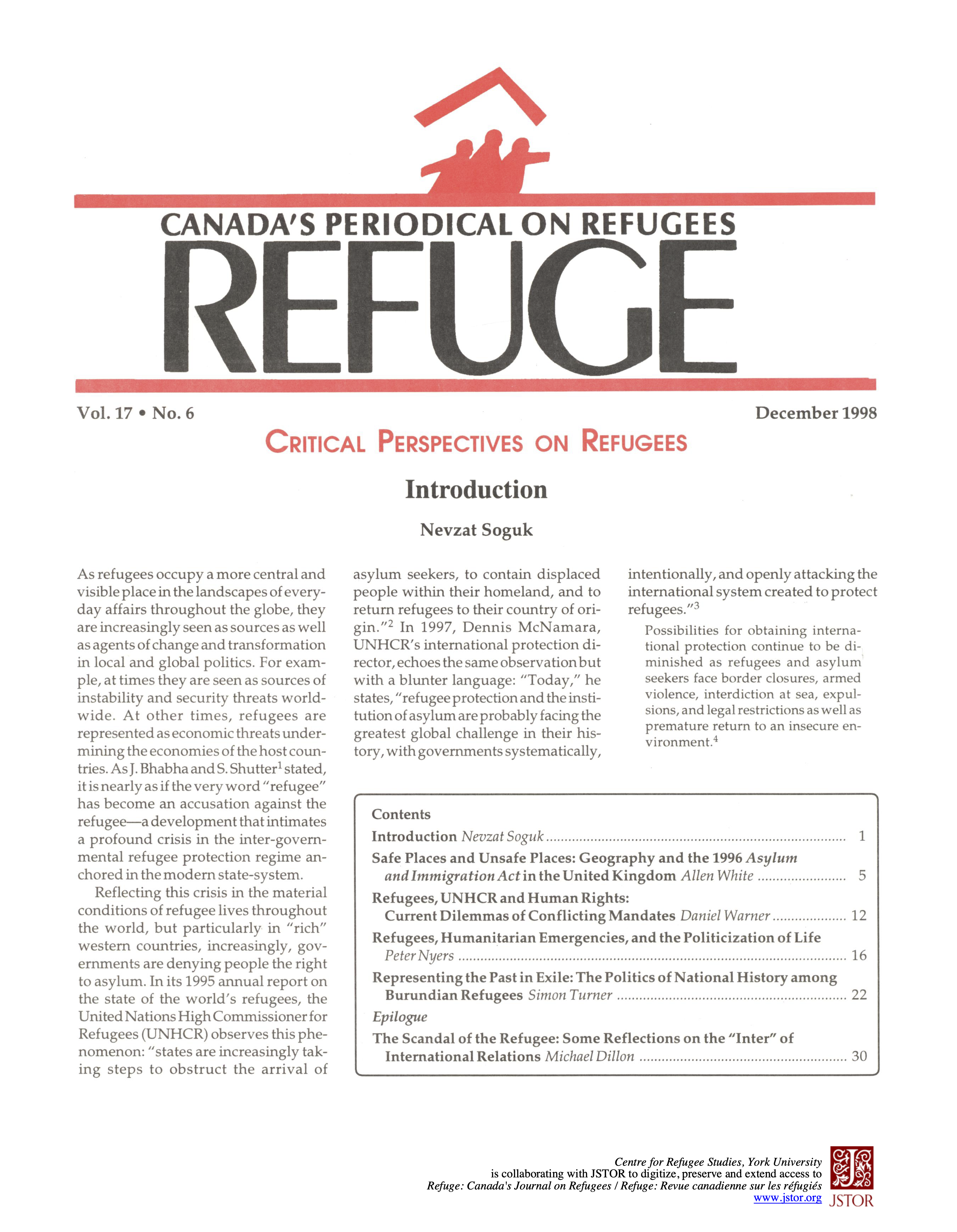Safe Places and Unsafe Places: Geography and the 1996 Asylum and Immigration Act in the United Kingdom
DOI:
https://doi.org/10.25071/1920-7336.21994Keywords:
United Kingdom, geography, geopolitics, law, refugees, asylum, appeals, accelerated proceduresAbstract
Over the last decade and a half the international refugee régime, as enshrined by the 1951 Convention and 1967 Protocol has come under sustained attack in western states. This is because of implicit assumptions about the universalism of the refugee identity and the rootedness of national identities by the framers, drafters and subsequent commentators on international refugee law (see Malkki 1992, and Hyndman 1998). Critical approaches to international refugee law have sufered from underdeveloped ideas about space and about the relationship between geography and law. In this paper I point to geographical and geopolitical assumptions and thinking that lies behind the passage and enforcement of accelerated asylum determination and appeal procedures in the United Kingdom. I conclude by suggesting how the moral landscape of refugee and asylum law might be re-oriented to stress connections between the United Kingdom and persecuted and oppressed peoples rather than stress the protection of the UK's boundaries.Metrics
Downloads
Published
How to Cite
Issue
Section
License
Copyright (c) 1998 Allen White

This work is licensed under a Creative Commons Attribution-NonCommercial 4.0 International License.
Refuge authors retain the copyright over their work, and license it to the general public under the Creative Commons Attribution-Non Commercial License International (CC BY-NC 4.0). This license allows for non-commercial use, reproduction and adaption of the material in any medium or format, with proper attribution. For general information on Creative Commons licences, visit the Creative Commons site. For the CC BY-NC 4.0 license, review the human readable summary.







